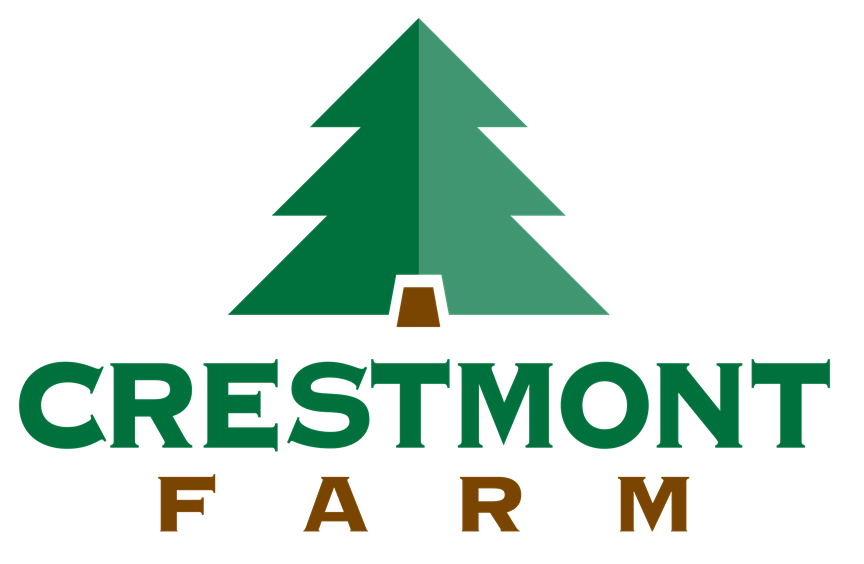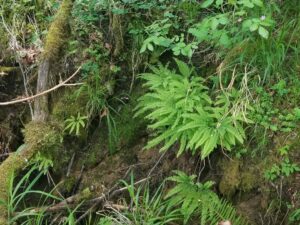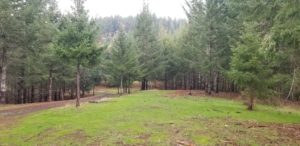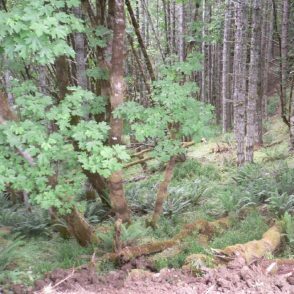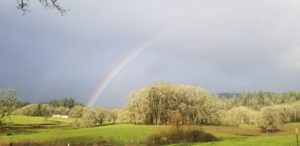Crestmont Farm, Crestmont Ranch, and Crestmont Land Trust collaborate on various habitat and ecological biodiversity initiatives as the Crestmont Farm Family. The contiguous trio of properties includes mixed-species forests, oak woodlands, oak savannah, conifer plantations, grazing pastures, and various habitat resources (including riparian zones, habitat for endangered and threatened species, and ecologically sensitive areas). Some areas include management challenges such as high voltage power lines, railroad throughways, and the Marys River riparian zones. Each property demonstrates the benefits of integrating agricultural production with habitat management to create a functioning, biodiverse, and sustainable ecosystem supportive of the individual property’s goals.
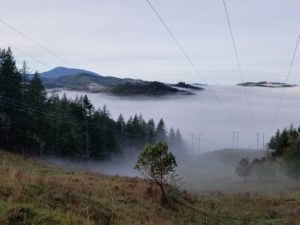
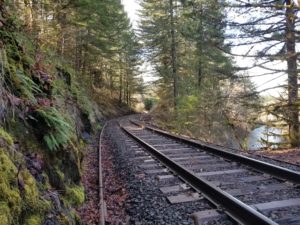
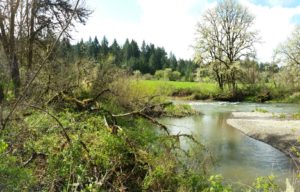
Many of Crestmont’s practices result from seeking ways to effectively and efficiently address multiple objectives simultaneously. For example, Crestmont grinds the stumps in silvopasture grazing areas. Although no one reason would likely justify the time, cost, and effort to remove the stumps, the resolution of multiple issues more than warrants the initiative. Some of these benefits include (1) ATV safety when managing the cows, (2) enhanced access for seeding and herbicide application, (3) controlling hardwood re-sprouts, (4) enhancing firefighting access, (5) recycling more of the stumps’ carbon into the soil, and (6) creating a more natural forest aesthetic. For more examples of the habitat initiatives employed across Crestmont and their intended benefits, see the table below.
The habitat diversity that has been created across the different areas within the Crestmont Farm Family is a testament to the creative practices that are employed. Not all practices work as originally contemplated and designed, but the failures often inform more than the successes. As a result, the Crestmont team often finds or develops innovative new approaches to address its challenges.
Some practices have unintended benefits as well. For example, the Oregon Vesper Sparrow (“OVS”) is a ground nesting bird that is a candidate species for listing under the Endangered Species Act. OVS thrive in the type of habitat that is created by the intense rotational grazing of upland prairies that is utilized at Crestmont Ranch. The grazing practices create a mosaic of short, medium and long patches of grass as well as disturbances that provide the necessary components for the Oregon Vesper Sparrow to breed and thrive. When the cattle are removed from an area where OVS annually nest, the birds tend to decrease in numbers and the population suffers.
| Habitat initiatives employed at Crestmont | Benefits: |
|---|---|
| Chipping forestry and agricultural debris | Avoid need for burning of slash, increase breakdown speed of material, recycle nutrients from material into soil, decrease usable material for pests such as Ips pine engraver beetle |
| Endangered species considerations | Manage habitat for the benefit of Taylor’s checkerspot butterfly, Golden Paintbrush, Fender’s blue butterfly, Kincaid’s lupine, Oregon Vesper Sparrow, northern spotted owl |
| Fertilizing (bio-solids/granular) | Apply sustainable nutrient management, develop of healthy soils, promote vigorous plant growth and health, establish deep plant root systems that are more resistant to drought and other stresses |
| Invasive species removal/prevention | Reduce spread of invasive plant species, improve habitat, facilitate growth of native plants species, improve aesthetics |
| Mulching (Mulching video) | Promote nutrient cycling, enable safe movement through the area, improve aesthetics, facilitate faster decay of forest debris, control erosion, smooth ground surface, provide brush removal and invasive species control, improve seed growth and area ‘healing’ from operations |
| Seeding | Control erosion, inhibit invasive plant species, establish native grass and forbs, improve quality foraging for cattle, improve aesthetics, promote habitat for pollinator species |
| Stump Grinding (Stump Grinding video) | Enable safe movement of utility vehicles through area, improve aesthetics, promote nutrient cycling and faster breakdown of stump material |
| Tree Pruning or Limbing | Reduce fuels for fire risk, improve aesthetics, allow light to ground for grass growth, facilitate movement of cattle through trees, enhance management access through trees for seeding, spraying, and maintenance, and improve access for wildfire suppression |
Crestmont Land Trust uses a multifaceted approach by applying similar forestry, grazing, habitat management, and ecological initiatives that are employed on Crestmont Farm and Crestmont Ranch. For more information, including photos and videos, please visit CrestmontLandTrust.org
